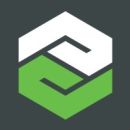
We're all sick of hearing it, but here we are: women are underrepresented in tech, and their numbers get even smaller when you look at women in leadership positions in tech.
According to the Bureau of Labor Statistics, women make up 34 percent of the tech sector. That’s not due to a lack of talent or skill — the three women we spoke with for this article are undoubtedly brilliant.
Instead, many women cite a lack of mentorship and unconscious bias in the hiring process as reasons that deter them from tech. It doesn’t help that there’s still a pay gap for women in tech: Hired found that 63 percent of the time, men were offered higher salaries than women for the same role at the same company.
But times are a-changin'. The same Hired study found that among U.S. cities, Boston has one of the lowest pay gaps for women in tech, and that its recruitment efforts have been successful.
Built In Boston chatted with a few local women leaders in tech, and they shared some insight into how they broke into a male-dominated industry, and why they stayed.
About the company: Panorama Education is an edtech startup that offers students and teachers surveys that assess their social skills, emotional development and family engagement.
Sejin Mong, team lead, strategic engagements, said that working in technology has a great way of making the mantra "anything is possible" really resonate.
Describe your current job.
I am the head of our strategic engagements team. I work with a team of strategic engagement managers, associates and account managers to support our largest state and district partnerships that run stakeholder feedback survey programs. My role is to lead a portfolio of clients, support my team in becoming stellar thought-partners and problem-solvers, and work closely with our product and engineering teams to make sure we're always building the best tools for our clients. These projects are often large and complicated, and it's our team's job to make our survey programs impactful and seamless.
When did you know you wanted to get into tech?
Having worked with different types of software as a math teacher and a data coach, I've seen a variety of challenges in education technology. Being a teacher or a principal and having to spend time wrestling with data can be really frustrating! Schools care a lot about understanding students' needs and it's tough when the barrier is having access to the right tools.
Tackling this barrier was what drew me to Panorama, and Panorama drew me into education technology. I've been really impressed with what's possible when engineers and educators work together to develop technology that is truly suited to schools. Being in technology has a great way of making the mantra "anything is possible" really resonate.
What advice do you have for women breaking into a male-dominated industry?
I think anytime I'm in the minority there's a heightened sense of pressure to do things perfectly and to be over-critical of mistakes. I've found that I've been most successful in my role when I work past the “writer's block” and share a half-baked idea rather than waiting for a perfect one. And rather than being overly critical of mistakes, I remind myself to stay curious and ask questions to learn from every experience.
What's your favorite part of your job?
I love problem-solving with people who have totally different skill sets from my own: whether we're designing a new feature of our product or planning for 50,000 paper family surveys to arrive in a large district. One of the incredible things about working with so many different people on shared problems is that I get to learn 10 different ways to tackle a single challenge. I've also loved seeing my team grow. This started out as a single role three years ago and has grown into an entire team. It's pretty special to be a part of that growth.
About the company: PTC helps companies make sure IoT devices fit into existing workflows so that they can innovate without constantly troubleshooting sensors.
Kathleen Mitford, executive vice president of products, worked in fashion for six years before switching to tech, which she called a “wise move.” Now, she gets a thrill watching PTC’s customers work to make products smaller and more connected, she said.
Describe your current job.
I am the executive vice president of products at PTC. At PTC, we are focused on helping our customers transform the way they design, manufacture, operate and service products for industrial customers. We have a leading industrial innovation platform and field-proven solutions that enable manufacturers and an ecosystem of partners and developers to capitalize on the promise of the Internet of Things and augmented reality technology today in order to drive the future of innovation. Chances are that you use, ride in, see or even wear things in your daily life that are designed or manufactured by our customers with PTC technology.
In my current role, I am responsible for portfolio management, product strategy, and research and development for PTC’s digital engineering, manufacturing and service offerings. I lead the product and R&D organizations and am committed to further enhancing PTC’s leadership role in the internet of things (IoT) and augmented reality (AR) markets.
It is an exciting time right now, both to be at PTC and in the technology space. If you think about technology today, it is evolving so quickly with things like AR and virtual reality (VR); with the internet changing and devices getting smaller and newer types of devices coming out. It is changing the way that we work, the way we live and the way we interact with each other. I get to see our customers doing really innovative things to make their products smarter and more connected, and our technology at PTC is a core piece of that. I am proud to be a part of a company that is helping to lead this future of innovation.
When did you know you wanted to get into tech?
In college. I was studying fashion design and took a class on using technology to make patterns digitally (without software you manually made a pattern using all types of rulers, shaping edges and templates). I loved how simple it was to create the first pattern and to easily modify variations. I considered going right into technology from college, but a wise professor advised that I get to know the industry before switching to technology. Wise move. I worked in the industry (fashion and retail) for six years before switching to technology.
What advice do you have for women breaking into a male-dominated industry?
It sounds silly, but I don’t think of myself as a woman — I am a technology leader. Men often seem to approach their careers with more confidence than women and I believe it’s this lack of confidence that sometimes holds us back. I advise women to have confidence in themselves. It’s amazing the progress you can make when you believe in yourself.
A great example from my personal life is when my daughter was four (she’s now six) and was upset because the boys at school told her she couldn’t do what they do because she’s a girl. Every day for a couple of weeks we practiced her power stance — stand tall, hands on hips and using her most confident voice saying, “I can do anything you can do, probably even better!” It worked.
It’s also our responsibility as women in male-dominated industries like technology to help change things and promote more diversity. Promoting STEM programs like FIRST and Girls who Code, mentoring young women and, being a champion to help promote other women is important to me and all part of fostering this change.
What's your favorite part of your job?
Hearing from customers the positive impact that our products have had on THEIR products is my favorite part of my role at PTC. Our technology is used in almost every industry but one particular area that really touches me is the positive impact that our technology is having on medical device manufacturing to help people live better lives. Smart, connected products are transforming healthcare in many ways and to work with a company that is supporting this type of innovation is really rewarding.






